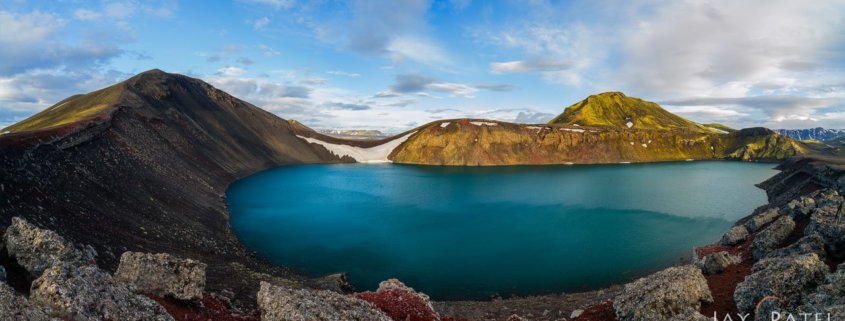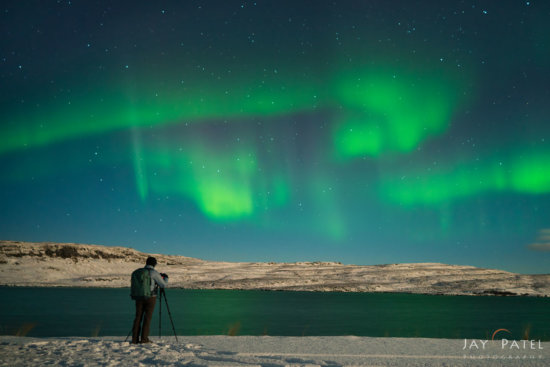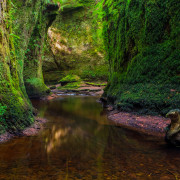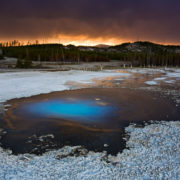What Camera Lens Should I Use For Nature Photography?
Nature photography is a diverse and dynamic field that requires the right tools to capture breathtaking landscapes, detailed close-ups, and stunning wildlife shots. One of the most critical choices a nature photographer must make is selecting the appropriate camera lens. The decision depends on various factors, including sharpness, focal length, maximum aperture, and environmental conditions. This guide will help you understand how to choose the best camera lens for nature photography and when to use specialty lenses such as tilt-shift and macro lenses.
Understanding Focal Length in Nature Photography
Focal length is a fundamental consideration when selecting a camera lens for nature photography. It determines the field of view and how much of the scene you can capture. The most commonly used focal lengths in nature photography include:
Wide-Angle Lenses (10mm-40mm)
Wide-angle lenses are perfect for capturing expansive landscapes, dramatic skies, and environmental portraits of animals in their natural habitats. These lenses provide a broad field of view, allowing photographers to create depth and perspective in their shots.
Best Uses for Wide-Angle Lenses:
- Grand landscapes with sweeping views
- Forest photography where you want to include the vastness of trees
- Night sky photography (especially with fast aperture wide-angle lenses)
Popular focal lengths of wide angle lenes include 16-35mm, 17-40mm or 14-24mm
Standard and Mid-Range Zoom Lenses (35mm-135mm)
A mid-range zoom lens is a versatile option for nature photographers who want to capture both landscapes and portraits of wildlife without switching lenses frequently.
Best Uses for Standard Zoom Lenses:
- Scenes requiring a natural perspective
- Capturing wildlife in their surroundings without distortion
- Flower photography and nature close-ups
Popular focal lengths of mid-range zoom lenses include 24-70mm and 24-105mm.
Telephoto Lenses (100m-600mm)
Telephoto lenses are essential for wildlife photography. They allow you to capture animals from a distance without disturbing their natural behavior. These lenses compress the background, making subjects stand out sharply.
Best Uses for Telephoto Lenses:
- Bird photography (a 400mm-600mm lens is ideal for this)
- Wildlife photography where close proximity isn’t possible
- Compressed landscape compositions for a unique perspective
Popular focal lengths of telephoto range zoom lenses include 100-400mm and 70-200mm.
Choosing the Right Aperture for Nature Photography
The maximum aperture of a lens determines how much light it can gather, impacting exposure and depth of field.
- Wide apertures (f/1.8 – f/4): Best for low-light conditions and achieving a beautiful background blur (bokeh), making subjects stand out. We will often use a f/2.8 lens for low-light wildlife shots or astrophotography.
- Narrow apertures (f/8 – f/22): Ideal for landscape photography where you need sharp details from foreground to background. When we want a wide depth of field we will use A f/11 setting on a wide-angle lens is great for detailed landscape photography.
Sharpness and Image Quality of Camera Lenses
Camera lens sharpness varies significantly between different models. Prime lenses generally offer superior sharpness compared to zoom lenses, but modern high-end zoom lenses provide excellent results.
How to Choose a Sharp Lens:
- Look for high-quality glass elements, such as aspherical elements and extra-low dispersion (ED) glass.
- Read reviews and test lens sharpness across different apertures.
- Use a lens hood to prevent lens flare and increase contrast.
Specialty Camera Lenses for Nature Photography
Tilt-Shift Lenses for Perspective Control
Tilt-shift lenses are less common in nature photography but can be highly useful for landscape photographers who want precise control over perspective and focus. These lenses are difficult to use, as they require manual adjustments to both tilt and shift functions. Most tilt-shift lenses are also manual focus, requiring careful precision when composing a shot. Additionally, they tend to be expensive, making them a niche choice for photographers who need specialized control over their compositions.
Best Uses for Tilt-Shift Lenses:
- Correcting distortion in wide-angle landscape shots
- Creating miniaturization effects in nature photography
- Enhancing depth of field control in close-up nature compositions
Popular choices include the Canon TS-E 24mm f/3.5L II and the Nikon PC-E Micro 45mm f/2.8D ED.
Macro Lenses for Close-Up Nature Photography
Macro lenses are essential for capturing extreme details of small subjects like insects, flowers, and textures. These lenses provide a 1:1 magnification ratio, allowing for life-size reproduction of tiny subjects. Most of these are prime lenses with very high quality to capture the most detailed images. They are also expensive.
Best Uses for Macro Lenses:
- Insect and butterfly photography
- Flower and plant close-ups
- Water droplets and textures in nature
Popular choices include 100mm f/2.8 macro lenses and 105mm f/2.8 macro lenses.
How to Decide Which Camera Lens to Use
Scenario 1: Landscape Photography at Sunrise or Sunset
- Best Lens: Wide-angle (16-35mm) with a narrow aperture (f/8 – f/16)
- Why? A wide-angle lens allows you to capture the full expanse of the sky and landscape while maintaining sharpness throughout the scene. The narrow aperture helps retain details from the foreground to the distant background. Shooting at golden hour provides warm tones and dynamic lighting, making a high-quality lens with anti-reflective coatings ideal for reducing glare and enhancing color.
Scenario 2: Bird Photography
- Best Lens: Telephoto (70-200mm, 100-400mm) with a fast aperture (f/2.8-f/5.6)
- Why? Birds are often perched high in trees or moving quickly through the canopy. A long focal length helps you capture distant subjects without scaring them away. A fast aperture allows more light into the camera, which is essential in low-light or overcast environments. Image stabilization can also help minimize camera shake when shooting handheld.

Handheld bird photography captured with telephoto lens using a narrow aperture, Iceland by Jay Patel
Scenario 3: Macro Photography of Tiny Subjects
- Best Lens: 90mm or 180mm macro lens
- Why? Tiny subjects require precise focus and magnification to highlight their intricate details. A macro lens with a 1:1 reproduction ratio ensures you can get life-size images. Features such as optical stabilization and a focus limiter switch can enhance your ability to track and photograph moving insects without disturbing them.
Scenario 4: Night Photography in Low Light
- Best Lens: Wide Angle prime (21, 24 or 25mm, f/1.8 to f/2.8)
- Why? Low-light conditions make it challenging to capture sharp images at night. A lens with a wide aperture (f/2.8 or less) allows more light in, allowing us to capture stars without star trails. Low light autofocus and high ISO capability are also critical for capturing clear, detailed night photos.
Scenario 5: Mountain Landscape Mid Range Zoom Lens
- Best Lens: 24-70mm
- Why? A medium-range zoom lens helps control perspective distortion, ensuring that mountain peaks and other vertical lines remain straight. This is particularly useful for large landscapes where distortion could make the scene look unnatural. Some scenes may require capturing multiple images that are later stitched together to form a panorama. Minimizing distortion during capture helps create a better panorama by ensuring seamless alignment and preserving natural proportions.
Final Thoughts
Choosing the ideal camera lens for nature photography depends on various factors, including your subject, shooting environment, and creative goals. Wide-angle lenses capture vast landscapes, telephoto lenses are essential for wildlife, and macro lenses reveal intricate details. Specialty lenses like tilt-shift offer advanced composition control, allowing for precise perspective adjustments, while fisheye lenses can create unique, artistic distortions. Additionally, the choice of lens should consider elements such as sharpness, aperture, and image stabilization to ensure the best possible results in different shooting conditions.














